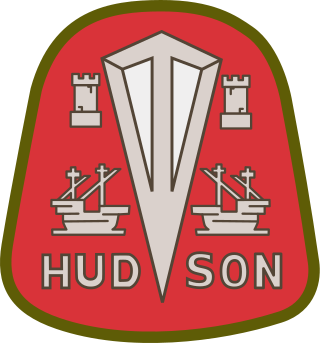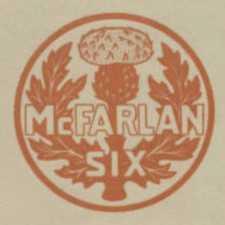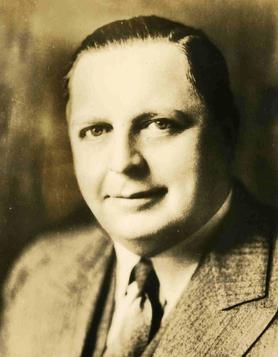



The LaFayette Motors Corporation was a United States-based automobile manufacturer. Founded in 1919, LaFayette Motors was named in honor of the Marquis de la Fayette, and LaFayette autos had a cameo of the Marquis as their logo.




The LaFayette Motors Corporation was a United States-based automobile manufacturer. Founded in 1919, LaFayette Motors was named in honor of the Marquis de la Fayette, and LaFayette autos had a cameo of the Marquis as their logo.
LaFayette was originally headquartered in Mars Hill, Indianapolis, Indiana, and made luxury motor cars, beginning in 1920. LaFayette innovations include the first electric clock in an auto. [1] In 1921, Charles W. Nash became president of LaFayette. Nash was already president of Nash Motors, but for a time the two brands remained separate companies, although Nash Motors was the principal LaFayette Motors stock holder. In the 1920s rumors circulated about Pierce-Arrow merging with LaFayette, Rolls-Royce or General Motors.
In 1922, LaFayette's facilities were moved to Milwaukee, Wisconsin.
In 1924, Nash Motors became full owner of LaFayette Motors, and the name was retired soon after. [2] Its factories were quickly put to a new, more profitable use: the manufacture of Ajax motor cars.
In 1934, Nash re-introduced the LaFayette name, this time for a line of smaller, less expensive autos. In 1935, Nash introduced a series known as the "Nash 400" to fill the perceived price gap between the LaFayette and the Nash. By 1937, it was determined that this perceived gap wasn't so important after all, and that Nash Motors was marketing too many models. The LaFayette and the Nash 400 were combined into a single model called the Nash LaFayette 400 for 1937, and the LaFayette ceased to be regarded as a separate make of car. For 1938, this became simply the Nash LaFayette, and the LaFayette line continued as Nash's lowest-priced offering through 1940. For 1941, the LaFayette was replaced by the all-new unibody Nash 600.

American Motors Corporation was an American automobile manufacturing company formed by the merger of Nash-Kelvinator Corporation and Hudson Motor Car Company on May 1, 1954. At the time, it was the largest corporate merger in U.S. history.
Rambler is an automobile brand name that was first used by the Thomas B. Jeffery Company between 1900 and 1914.

Packard was an American luxury automobile company located in Detroit, Michigan. The first Packard automobiles were produced in 1899, and the last Packards were built in South Bend, Indiana, in 1958.

Edsel is a discontinued division and brand of automobiles that was produced by the Ford Motor Company in the 1958 to 1960 model years. Deriving its name from Edsel Ford, son of company founder Henry Ford, Edsels were developed in an effort to give Ford a fourth brand to gain additional market share from Chrysler and General Motors. Established as an expansion of the Lincoln-Mercury Division to three brands, Edsel shared a price range with Mercury; the division shared its bodies with both Mercury and Ford.

Charles Williams Nash was an American automobile entrepreneur who served as an executive in the automotive industry. He played a significant role in building up General Motors as its 5th President. In 1916, he bought Thomas B. Jeffery Company, makers of the popular Rambler automobile, and renamed it Nash Motors. The resulting firm played an independent role in an automobile industry increasingly dominated by the Big Three: General Motors, Ford, and Chrysler.

Nash Motors Company was an American automobile manufacturer based in Kenosha, Wisconsin from 1916 until 1937. From 1937 through 1954, Nash Motors was the automotive division of the Nash-Kelvinator Corporation. As sales of smaller firms declined after 1950 in the wake of the domestic Big Three automakers’ advantages in production, distribution, and revenue, Nash merged with Hudson Motors to form American Motors Corporation (AMC). Nash automobile production continued from 1954 through 1957 under AMC.

Mercury was a brand of mid-priced automobiles produced by American manufacturer Ford Motor Company between 1938 and 2011 with 1939 being the first model year. It stood as its own line within Ford until 1945, and thereafter formed half of Ford's Lincoln-Mercury Division. Created by Edsel Ford in 1938 to bridge the gap between the Ford and Lincoln model lines, its principal competition was General Motors' Buick and Oldsmobile divisions, and Chrysler Corporation's DeSoto and Chrysler brands.

The Hudson Motor Car Company made Hudson and other branded automobiles in Detroit, Michigan, U.S., from 1909 until 1954. In 1954, Hudson merged with Nash-Kelvinator to form American Motors Corporation (AMC). The Hudson name was continued through the 1957 model year, after which it was discontinued.

LaSalle was an American brand of luxury automobiles manufactured and marketed, as a separate brand, by General Motors' Cadillac division from 1927 through 1940. Alfred P. Sloan, GM's Chairman of the Board, developed the concept for four new GM marques - LaSalle, Marquette, Viking and Pontiac - paired with already established brands to fill price gaps he perceived in the General Motors product portfolio. Sloan created LaSalle as a companion marque for Cadillac. LaSalle automobiles were manufactured by Cadillac, but were priced lower than Cadillac-branded automobiles, were shorter, and were marketed as the second-most prestigious marque in the General Motors portfolio. LaSalles were titled as LaSalles, and not as Cadillacs. Like Cadillac — named after Antoine de la Mothe Cadillac — the LaSalle brand name was based on that of another French explorer, René-Robert Cavelier, Sieur de La Salle.

In the automotive industry, rebadging is a form of market segmentation used by automobile manufacturers around the world. To allow for product differentiation without designing or engineering a new model or brand, a manufacturer creates a distinct automobile by applying a new "badge" or trademark to an existing product line.

Captive import is a marketing term and a strategy for a vehicle that is foreign-built and sold under the name of an importer or by a domestic automaker through its own dealer distribution system.

The Thomas B. Jeffery Company was an American automobile manufacturer in Kenosha, Wisconsin, from 1902 until 1916. The company manufactured the Rambler and Jeffery brand motorcars. It was preceded by the Gormully & Jeffery Manufacturing Company, a bicycle manufacturer. It was the predecessor company to Nash Motors, and thus one of the predecessor companies of American Motors Corporation (AMC) and later Chrysler.

McFarlan was a luxury American automobile manufactured in Connersville, Indiana, from 1909 to 1928, by the McFarlan Carriage Company and the McFarlan Motor Car Company.

The Nash Ambassador is a luxury automobile that was produced by Nash Motors from 1927 until 1957. For the first five years it was a top trim level, then from 1932 on a standalone model. Ambassadors were lavishly equipped and beautifully constructed, earning them the nickname "the Kenosha Duesenberg".

The Nash Rambler is a North American automobile that was produced by the Nash Motors division of Nash-Kelvinator Corporation from 1950 until 1954 in sedan, wagon, and fixed-profile convertible body styles.

Roy Dikeman Chapin Jr. was the chairman and chief executive officer of American Motors Corporation (AMC). Chapin's father, Roy D. Chapin Sr., was one of the co-founders of the Hudson Motor Car Company; Hudson later merged with Nash-Kelvinator Corporation in 1954 to form American Motors. Roy D. Chapin Jr. was instrumental in introducing many successful lines of cars by American Motors that included the Gremlin, Hornet, and Javelin, as well as the purchase of Kaiser Jeep by the automaker.

George Walter Mason was an American industrialist. During his career Mason served as the Chairman and CEO of the Kelvinator Corporation (1928-1937), Chairman and CEO of the Nash-Kelvinator Corporation (1937-1954), and Chairman and CEO of American Motors Corporation (1954).

Roy Abernethy was an executive in the American automobile industry, serving as CEO of American Motors Corporation (AMC) from February 1962 to January 1967. Before his tenure at AMC, Abernethy had been with Packard Motors and Willys-Overland. Abernethy replaced George W. Romney, who resigned from AMC to become Governor of Michigan.

In the United States, the automotive industry began in the 1890s and, as a result of the size of the domestic market and the use of mass production, rapidly evolved into the largest in the world. The United States was the first country in the world to have a mass market for vehicle production and sales and is a pioneer of the automotive industry and mass market production process. During the 20th century, global competitors emerged, especially in the second half of the century primarily across European and Asian markets, such as Germany, France, Italy, Japan and South Korea. The U.S. is currently second among the largest manufacturers in the world by volume.

The automotive industry in the Philippines is one of the largest in the Asia-Pacific region, with approximately 441.4 thousand vehicles sold in 2023. Most of the vehicles sold and built in the Philippines are from foreign brands. For the most part, the Philippines is dominated by Japanese automobile manufacturers like most of its ASEAN neighbors. The automobile production in the country is covered under the Philippine Motor Vehicle Development Program implemented by the Board of Investments. In addition, there are also a small number of independent firms who assemble and fabricate jeepneys and other similar vehicles, using surplus engines and drivetrain parts mostly from Japan.